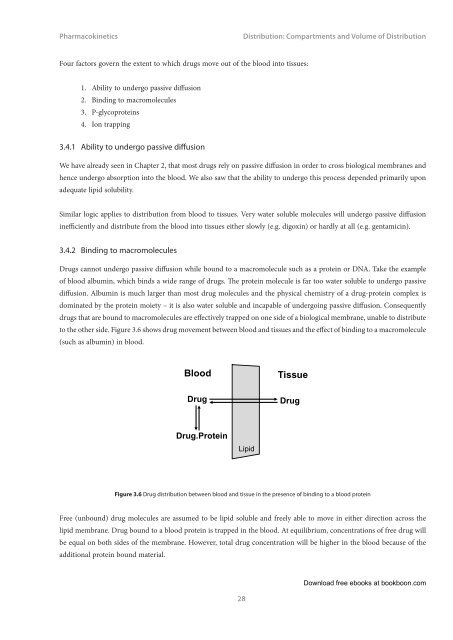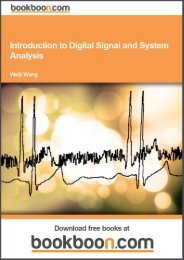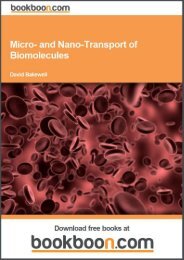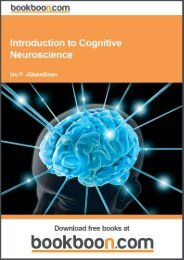Pharmacokinetics Language English Format: PDF Price - Tutorsindia
Pharmacokinetics Language English Format: PDF Price - Tutorsindia
Pharmacokinetics Language English Format: PDF Price - Tutorsindia
- No tags were found...
You also want an ePaper? Increase the reach of your titles
YUMPU automatically turns print PDFs into web optimized ePapers that Google loves.
<strong>Pharmacokinetics</strong>Distribution: Compartments and Volume of DistributionFour factors govern the extent to which drugs move out of the blood into tissues:1. Ability to undergo passive diffusion2. Binding to macromolecules3. P-glycoproteins4. Ion trapping3.4.1 Ability to undergo passive diffusionWe have already seen in Chapter 2, that most drugs rely on passive diffusion in order to cross biological membranes andhence undergo absorption into the blood. We also saw that the ability to undergo this process depended primarily uponadequate lipid solubility.Similar logic applies to distribution from blood to tissues. Very water soluble molecules will undergo passive diffusioninefficiently and distribute from the blood into tissues either slowly (e.g. digoxin) or hardly at all (e.g. gentamicin).3.4.2 Binding to macromoleculesDrugs cannot undergo passive diffusion while bound to a macromolecule such as a protein or DNA. Take the exampleof blood albumin, which binds a wide range of drugs. The protein molecule is far too water soluble to undergo passivediffusion. Albumin is much larger than most drug molecules and the physical chemistry of a drug-protein complex isdominated by the protein moiety – it is also water soluble and incapable of undergoing passive diffusion. Consequentlydrugs that are bound to macromolecules are effectively trapped on one side of a biological membrane, unable to distributeto the other side. Figure 3.6 shows drug movement between blood and tissues and the effect of binding to a macromolecule(such as albumin) in blood.BloodDrugTissueDrugDrug.ProteinLipidFigure 3.6 Drug distribution between blood and tissue in the presence of binding to a blood proteinFree (unbound) drug molecules are assumed to be lipid soluble and freely able to move in either direction across thelipid membrane. Drug bound to a blood protein is trapped in the blood. At equilibrium, concentrations of free drug willbe equal on both sides of the membrane. However, total drug concentration will be higher in the blood because of theadditional protein bound material.28Download free ebooks at bookboon.com
















